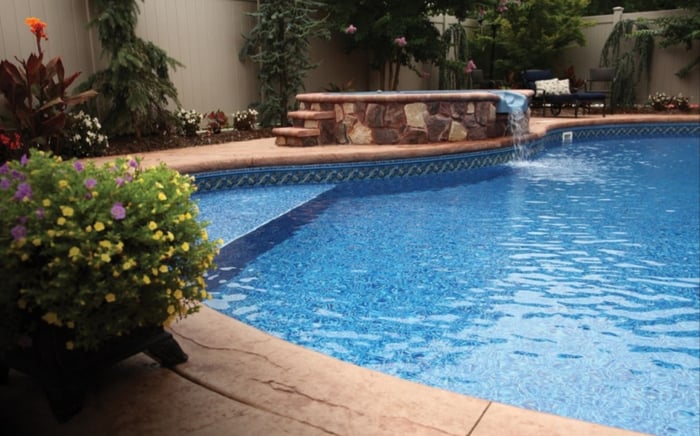It can be frustrating for pool owners to see unsightly stains in their swimming pool. After all, no one wants to jump into a dirty pool. Nonetheless, dealing with stains is just another part of pool maintenance. With the proper knowledge, tools, and chemicals, pool owners can remove just about any stain.
Diagnose the Stain
The first step in removing a pool stain is to diagnose what kind of stain it is. Pool stains can be caused by various sources including metals, rust, or organic materials such as leaves, mud, algae or berries. Different types of stains require different treatments. The best way to diagnose a pool stain is by looking at the color. Stains caused by metals tend to be reddish-brown and have a rust- like appearance. The most common metals that cause pool stains include iron, manganese, or copper. Iron stains can look rusty and red, brown, and greenish. Copper stains are usually bluish green, and manganese will cause brownish-black or purple stains. If there is evidence of organic matter and the stains appear green and brown, the culprit is likely leaves, mud, or other plant matter. Conversely, brightly colored berries or seeds will leave stains that appear red and blue. Once you have an idea of what is causing the stain, it’s time to test and treat it.
Organic Stains
These stains typically occur when debris such as leaves, mud, berries, algae, or dead worms sink down and settle on the bottom of the pool. While they may make your pool look dingy and dirty, they are relatively easy to remove. If you suspect the stains in your pool are the result of organic material, try applying a small amount of chlorine directly to the stain. Organic stains will dissolve easily and can be brushed away using a soft head brush, while metallic stains are more stubborn and tend to stay put. If there are multiple organic stains in the pool, it is best to shock your pool and let it sit overnight. Next you will need to brush away the stains and keep chlorine levels higher in the pool until the stains are removed.
Metal Based Stains
These stains can be caused by well water or corrosion from copper pipes. A small amount of oxidized copper can cause large stains in the pool. These types of stains often occur around ladders, drains, stairs, and under the lip of the pool. In order to treat these stains, you will need to know exactly which type of metal is causing it. This can be determined through a water sample. Take the sample to your local pool care store to determine what the problem is and they can recommend special chemicals and additives to treat the problem. You can also use a citrus based stain remover to move the process along. If these solutions do not solve your problem, you may need to seek professional attention.
Preventing Stains
The best way to prevent stains in your pool is through proper care and maintenance. This includes testing your water regularly to ensure proper chlorine and pH levels. Improper water balance can cause stains to occur. Furthermore, be sure to remove any debris from your pool and vacuum the floor on a regular basis. Routine cleaning and water maintenance is vital for stain prevention.




